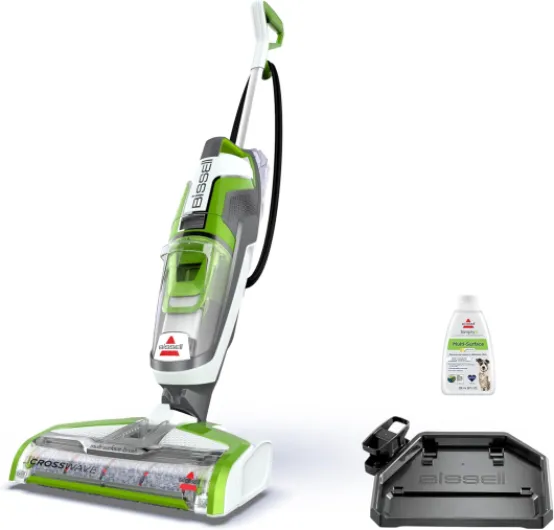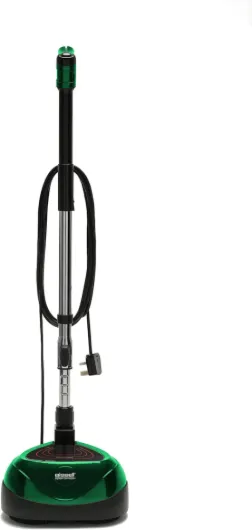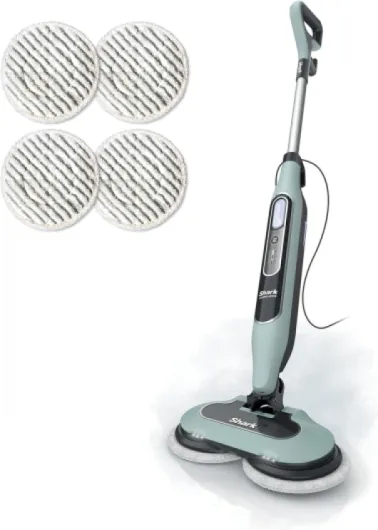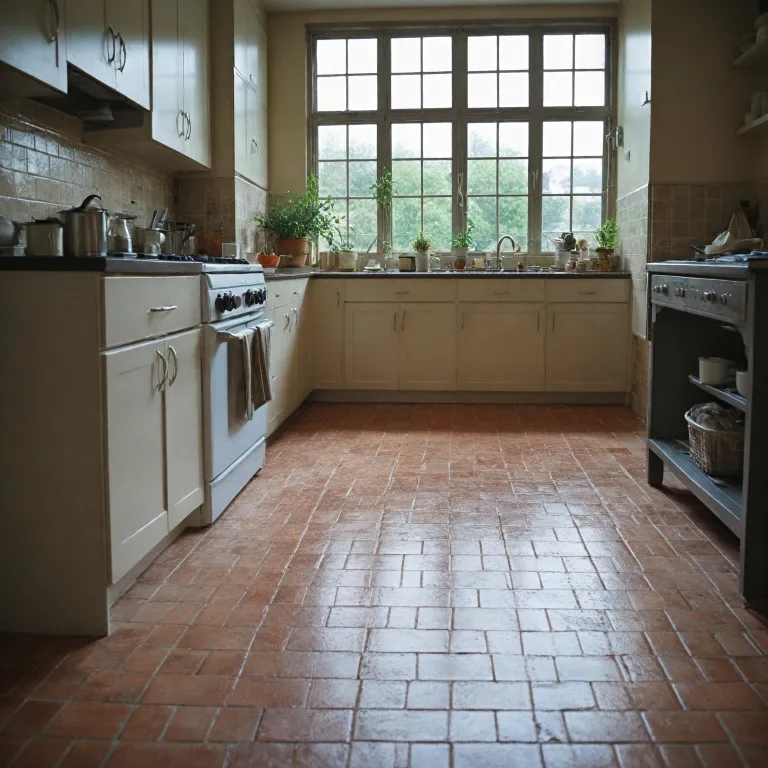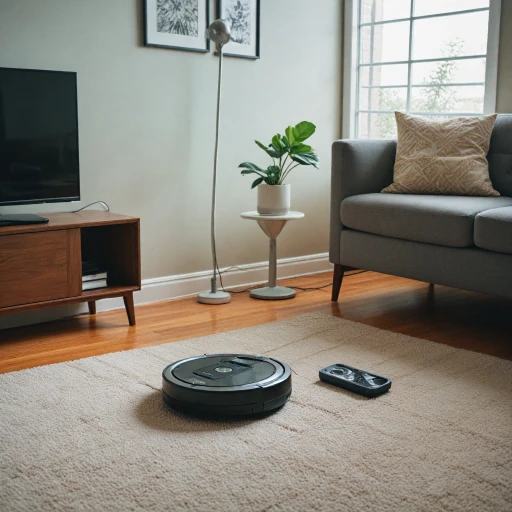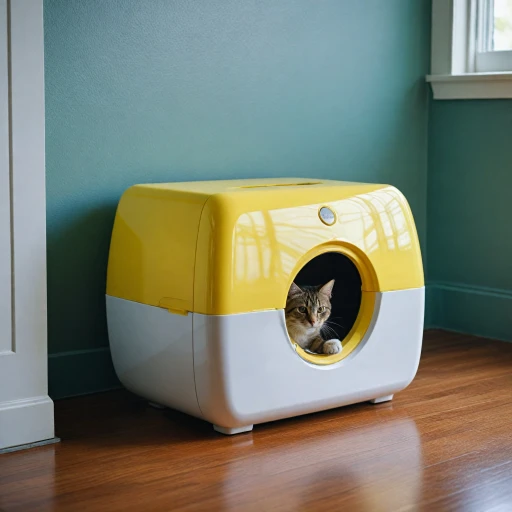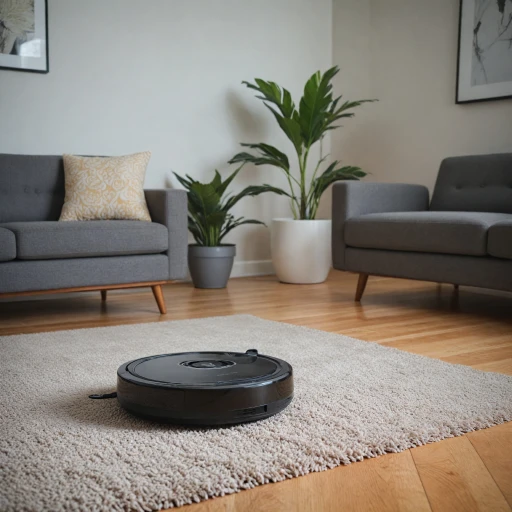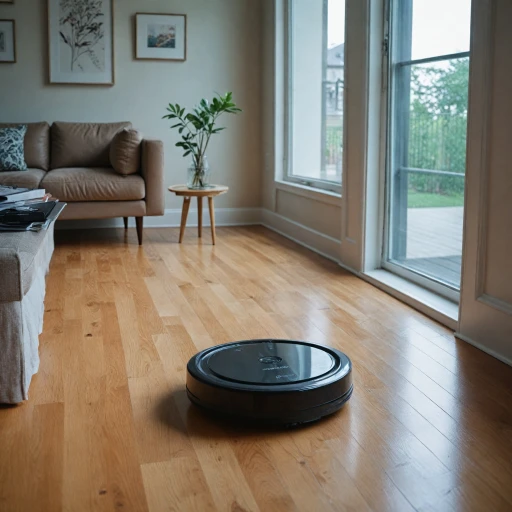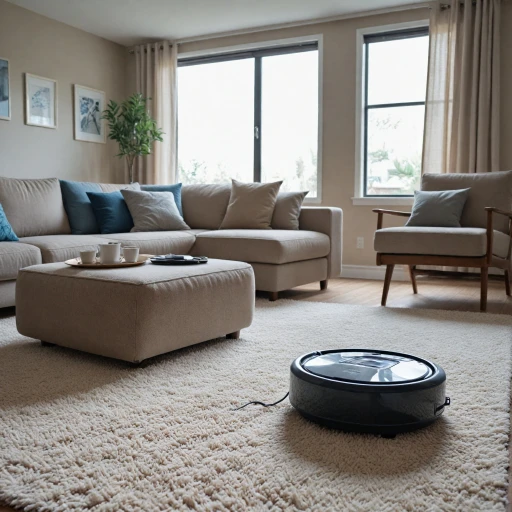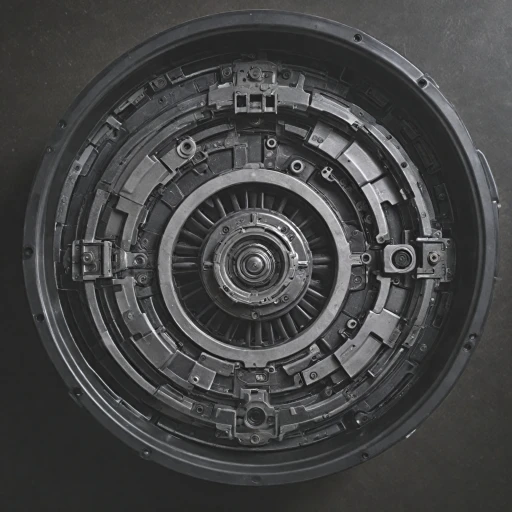
Understanding the unique needs of tile floors
Why tile floors demand special cleaning solutions
Tile floors are a popular choice for many homes and businesses due to their durability and attractive appearance. However, keeping tile surfaces truly clean requires more than just a standard cleaning machine. The hard surface of tile can hide dirt and grime in grout lines, making deep cleaning a challenge. Unlike carpet, where dirt sits on the fibers, tile grout can trap particles, leading to stubborn stains and buildup over time.
Understanding the challenges of grout and hard surfaces
Grout cleaning is often the toughest part of maintaining tile floors. Grout lines are porous and can absorb spills, dirt, and even cleaning solutions if not properly sealed. This means that a cleaning tool or machine designed for tile must be able to reach into these lines, not just clean the surface tile. High pressure options or specialized brushes can help, but not all cleaning machines are equipped for this task.
How cleaning equipment for tile differs from carpet cleaning machines
When comparing cleaning machines, it’s important to note that products made for carpet cleaning may not be suitable for tile. Tile cleaning requires different brushes and sometimes higher pressure to remove dirt from hard surfaces and grout. Some machines offer interchangeable tools or attachments, giving you more options for both tile and carpet. Price and manufacturer reputation also play a role in choosing the right item for your needs.
Factors to consider before adding a cleaning machine to your cart
- Type of tile: Some tiles are more delicate and may require a gentler cleaning solution or brush.
- Grout width and depth: Wider or deeper grout lines may need a heavy duty machine or a specialized tile cleaner.
- Frequency of cleaning: High-traffic areas might benefit from a robust floor machine with deep cleaning capabilities.
- Delivery and support: Check if the product offers free shipping and reliable customer service from the manufacturer.
- Maintenance: Regular upkeep of your cleaning equipment ensures it remains efficient over time.
For those interested in learning more about cleaning hard surfaces, including tile and hardwood, this guide on choosing the ideal robot vacuum for hardwood floors offers additional insights into selecting the right cleaning machine for your specific needs.
Key features to look for in a robot vacuum for tiles
Essential Features for Effective Tile Cleaning
When choosing a robot vacuum for tile floors, it’s important to focus on features that address the unique challenges of hard surfaces and grout lines. Not all cleaning machines are created equal, and the right product can make a big difference in how well your tile floors are maintained.
- Brush Design: Look for a cleaning machine with specialized brushes or cleaning tools designed for hard surfaces. A good brush can reach into grout lines and remove dirt grime that accumulates over time. Some models offer a combination of bristle and rubber brushes for better performance on tile grout.
- Suction Power: High pressure suction is essential for deep cleaning tiles and extracting debris from grout. Machines with adjustable suction options allow you to tailor the cleaning power to your floor type, whether it’s tile, carpet, or a mix of both.
- Navigation and Mapping: Advanced navigation systems help the robot cleaner avoid obstacles and cover every inch of your tile floors. Smart mapping ensures the machine doesn’t miss any hard-to-reach areas, especially in rooms with complex layouts.
- Water Tanks and Mopping: Some robot vacuums double as mops, offering a wet cleaning solution for sticky messes. If you want a deeper clean, consider a model with a water tank and mopping function, but check if the manufacturer recommends it for your specific tile type.
- Battery Life: Large tile areas require cleaning equipment with long battery life. Check the product specifications for run time and charging options to ensure your robot can handle the job in one go.
- Maintenance and Accessories: Easy-to-clean filters, replaceable brushes, and accessible dustbins make maintenance less of a chore. Some machines come with extra cleaning tools or offer free shipping on replacement parts, which can save you time and money.
- Price and Delivery: Compare price points and delivery options. While some high-end models offer advanced features, there are also budget-friendly cleaning machines that perform well on tile floors. Look for deals like free shipping or add cart discounts when purchasing online.
Comparing to Other Floor Types
It’s worth noting that not all robot vacuums perform equally on every surface. If you have both carpet and tile in your home, consider a machine that can transition smoothly between different floor types. For more insights on how robot vacuums handle carpet cleaning, check out this guide on choosing the right robot vacuum for your shag carpet.
Additional Considerations
Some cleaning machines are marketed as heavy duty or commercial grade, but make sure the item is suitable for residential use if that’s your need. Also, check if the product is an original from a reputable manufacturer to ensure durability and warranty support. Reading user reviews and consulting with cleaning equipment experts can help you find the best solution for your tile cleaning needs.
Comparing robot vacuums and traditional cleaning machines for tiles
Robot Vacuums vs. Traditional Tile Cleaning Machines
When it comes to cleaning tile floors, both robot vacuums and traditional cleaning machines have their own strengths and limitations. Understanding these differences can help you choose the right cleaning equipment for your needs.- Cleaning Coverage and Convenience: Robot vacuums offer hands-free cleaning, making them a convenient solution for daily maintenance. They can navigate around furniture and reach under hard-to-access areas. Traditional machines, like heavy duty floor machines or high pressure tile cleaners, often require manual operation but can deliver more targeted deep cleaning, especially on stubborn dirt grime or grout lines.
- Effectiveness on Grout and Hard Surfaces: While robot vacuums are effective at picking up surface dirt on tile floors, they may struggle with deep grout cleaning. Traditional machines, especially those with specialized brushes or high pressure options, can better tackle dirt embedded in tile grout. Some cleaning machines are designed specifically for grout lines, offering a more thorough clean.
- Versatility and Tools: Many robot vacuums come with multi-surface cleaning tools, allowing them to transition from tile to carpet. However, traditional machines often include a wider range of attachments for different surfaces, such as carpet cleaning or hard surface tile cleaning. This can be a deciding factor if your home has a mix of floor types.
- Price and Delivery: Robot vacuums generally range in price depending on features like smart navigation, brush design, and battery life. Traditional cleaning machines can be more expensive, especially commercial-grade models, but may offer free shipping or add cart discounts from certain manufacturers. Always compare the total cost, including delivery and available options, before making a decision.
- Maintenance and Longevity: Robot vacuums require regular maintenance, such as emptying the dustbin and cleaning the brush. Traditional machines may need more intensive upkeep, especially if used for heavy duty tile cleaning. Manufacturer recommendations for each product should be followed to ensure long-term performance.
| Item | Robot Vacuum | Traditional Cleaning Machine |
|---|---|---|
| Best for | Daily cleaning, light dirt | Deep cleaning, grout cleaning |
| Cleaning Tool | Brush, suction | Brush, high pressure, scrubbing |
| Surface Tile | Yes | Yes |
| Grout Lines | Limited | Effective |
| Carpet Cleaning | Some models | With attachments |
| Price Range | $$ - $$$ | $$$ - $$$$ |
| Maintenance | Low to moderate | Moderate to high |
Common challenges when cleaning tiles with robots
Challenges with Robot Vacuums on Tile Floors
Robot vacuums have become a popular cleaning solution for hard surfaces like tile floors, but they are not without their challenges. Understanding these common issues can help you make a more informed decision when choosing a cleaning machine for your home.
- Grout Cleaning Limitations: Most robot vacuums struggle to reach deep into grout lines. Dirt and grime often settle in these spaces, and a standard brush or cleaning tool may not provide the deep cleaning power needed for stubborn tile grout. For homes with wide or deep grout lines, a dedicated grout cleaning machine or high pressure tile cleaner might be more effective.
- Handling Hard Surfaces and Transitions: While robot vacuums are designed for hard surfaces, they can sometimes have trouble moving between different floor types, such as from tile to carpet. Some products may get stuck or fail to clean effectively along the edges or corners of tile floors, missing dirt and debris in these hard-to-reach areas.
- Brush and Suction Power: The original manufacturer’s brush design and suction strength play a big role in how well a robot vacuum can clean tile. Machines with weak suction or basic brushes may leave behind fine dust or larger debris, especially on textured surface tile or in heavy duty cleaning scenarios.
- Maintenance and Wear: Tile cleaning can be tough on cleaning equipment. Brushes and wheels may wear down faster on hard surfaces, impacting the machine’s performance over time. Regular maintenance, as discussed earlier, is essential to keep your cleaning machine working efficiently.
- Price and Product Options: The price of a robot vacuum with advanced tile cleaning features can be higher than traditional cleaning machines. While some models offer free shipping or add cart promotions, it’s important to compare options and consider the long-term value of the product, especially if you need specialized tools for deep cleaning or grout care.
Choosing the right cleaning machine for tile floors means weighing these challenges against your specific needs. If your home has a mix of carpet and tile, or if you require frequent deep cleaning, you may need to look for machines with specialized brushes, heavy duty suction, or even consider supplementing your robot vacuum with other cleaning equipment for the best results.
Maintenance tips to keep your robot vacuum efficient on tiles
Simple steps to keep your robot vacuum working its best on tile
Regular maintenance is essential for any cleaning machine, especially when dealing with hard surfaces like tile floors. Tiles and grout lines can trap dirt grime, making it important to keep your robot vacuum in top shape for deep cleaning. Here are some practical tips:- Empty the dustbin often: Tile cleaning can pick up more debris than carpet, especially in grout lines. An overfilled dustbin reduces suction and cleaning efficiency.
- Clean the brushes and filters: Brushes and filters are key cleaning tools. Remove tangled hair and dirt from the brush regularly. Wash or replace filters as recommended by the manufacturer to maintain airflow and suction.
- Check the wheels and sensors: Tiles can be slippery or have uneven grout. Wipe the wheels and sensors to prevent navigation issues and ensure the machine covers the entire floor surface.
- Inspect the mop attachment (if available): Some robot vacuums offer mopping options for tile floors. Clean the mop pad after each use and refill the water tank with the original cleaning solution or as directed by the product manual.
- Monitor battery health: Regularly charge your robot vacuum and avoid letting the battery drain completely. This helps maintain consistent cleaning performance over time.
What to do when your robot vacuum struggles with tile grout
Grout cleaning is a common challenge for robot vacuums. Dirt and grime can settle deep into grout lines, making it hard for standard brushes to reach. Consider these solutions:- Use a high pressure cleaning machine or a heavy duty tile cleaner for occasional deep cleaning. Robot vacuums are great for daily maintenance, but sometimes manual tools or specialized machines are needed for stubborn grout stains.
- Choose a robot vacuum with a brush designed for hard surfaces and tile grout. Some products offer specific cleaning equipment or brush options for better grout cleaning.
- Supplement your robot vacuum with a dedicated tile cleaning machine or carpet cleaning tool for areas with heavy dirt grime.
Manufacturer recommendations and delivery tips
Always follow the manufacturer's guidelines for cleaning and maintenance. Using the right cleaning solution and tools ensures your machine lasts longer and performs better. If you purchase a new cleaning machine, check for free shipping or add cart options to save on delivery costs. Proper care of your cleaning equipment protects your investment and keeps your tile floors looking their best.Frequently asked questions about cleaning machines for tiles
What makes a robot vacuum suitable for tile floors?
Robot vacuums designed for tile floors often feature specialized brushes and cleaning tools that can handle hard surfaces and grout lines. Look for a product with strong suction and a brush that can reach into tile grout to remove dirt grime. Some machines also offer high pressure or deep cleaning modes, which help with stubborn stains on tile floors.Can a robot vacuum clean both tile and carpet?
Many robot vacuums are built to transition between hard surfaces like tile and carpet. However, the effectiveness can vary. A machine with adjustable cleaning modes and a versatile brush is ideal if your home has both surface tile and carpet. Check the manufacturer's specifications to ensure the cleaner is suitable for multiple floor types.How does price relate to performance?
Price often reflects the features and cleaning equipment included. Higher-priced cleaning machines may offer advanced navigation, better battery life, and more powerful suction. However, some affordable options still provide solid performance for tile cleaning. Always compare options and consider what features are essential for your needs.What about cleaning grout lines?
Grout cleaning is a common challenge. Not all robot vacuums can deep clean tile grout, especially if the grout lines are deep or uneven. A heavy duty cleaning machine or a specialized grout cleaning tool might be needed for tough dirt grime. Some robots come with brushes designed to agitate and lift debris from grout lines, but manual intervention may still be required for the best results.Is maintenance difficult for these machines?
Regular maintenance is key to keeping your cleaning machine efficient. Empty the dustbin after each use, clean the brush and filters, and check for tangled hair or debris. Following the manufacturer's instructions helps prolong the life of your cleaner and ensures consistent performance on hard surfaces like tile floors.Are there options for free shipping or quick delivery?
Many retailers offer free shipping or expedited delivery for cleaning machines and accessories. When you add cart to your online order, check for delivery options and any available promotions. Buying directly from the manufacturer can sometimes include original item warranties or exclusive deals.What should I consider before choosing a cleaning solution?
When selecting a tile cleaner or cleaning solution, ensure it is compatible with your robot vacuum and safe for your tile floors. Some products are designed specifically for hard surface cleaning and won't damage the finish or grout. Always follow the manufacturer's recommendations for cleaning solutions to avoid voiding warranties or harming your machine.- Check if the cleaning tool is suitable for your floor type
- Compare product features and price
- Look for machines with specialized brushes for grout cleaning
- Review delivery and free shipping options before purchase
- Use only approved cleaning solutions for your equipment

